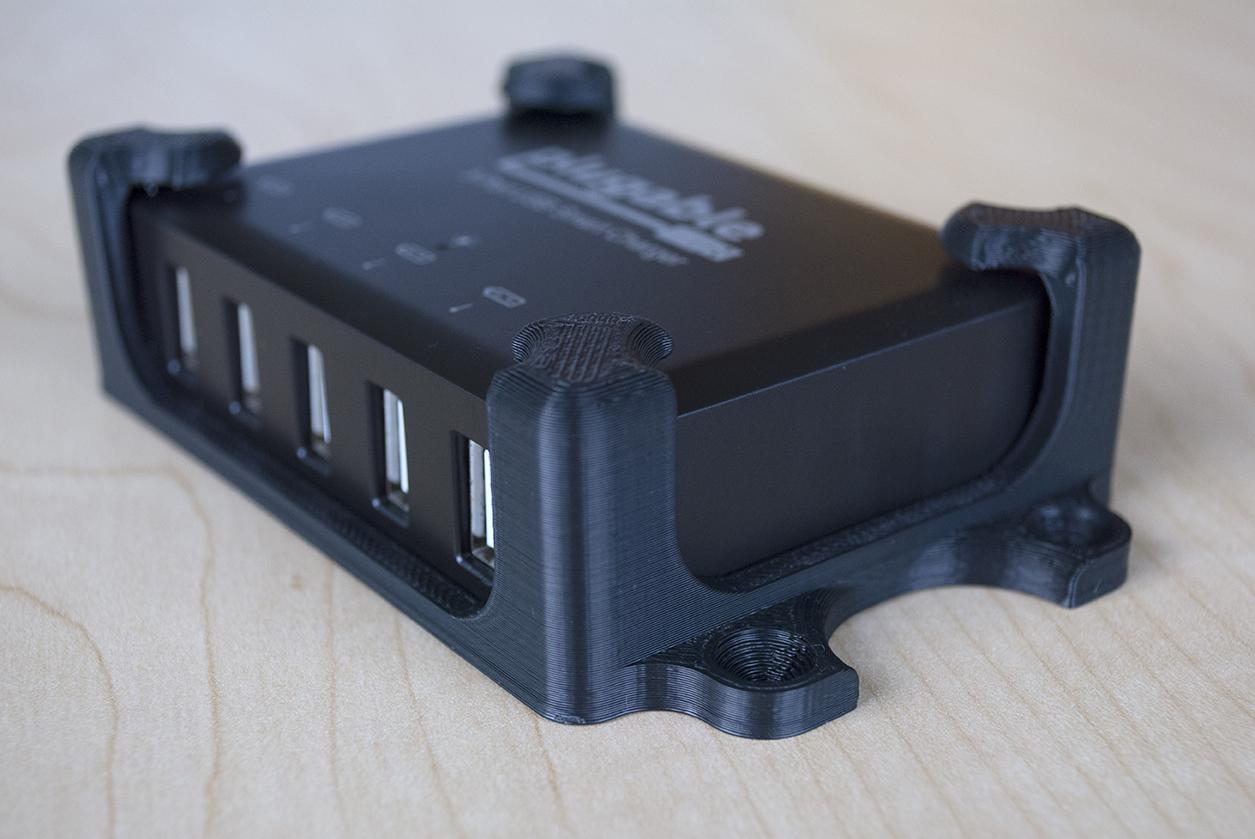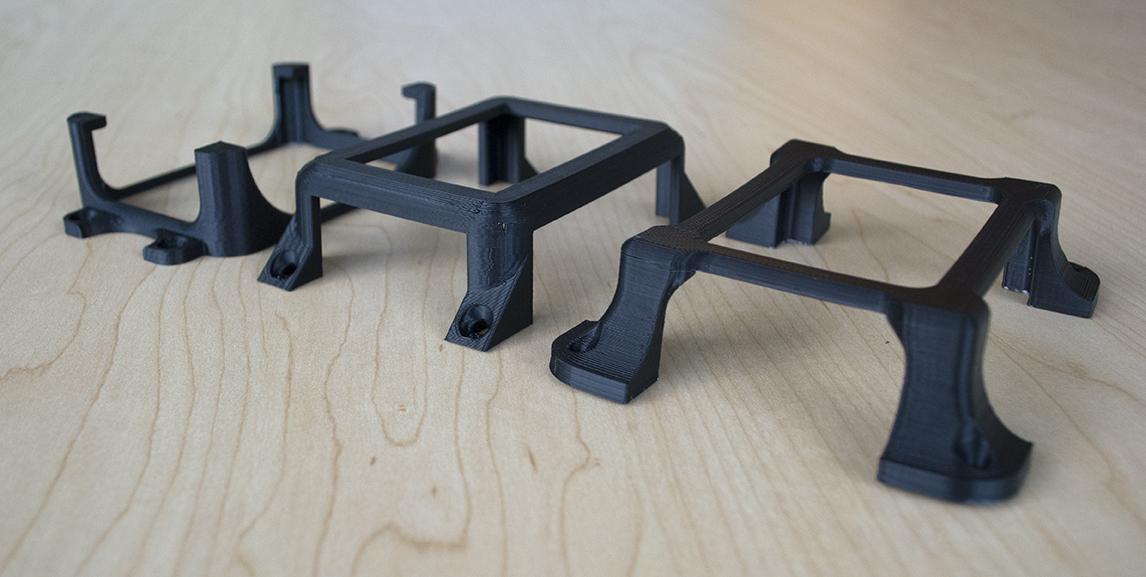For this week’s project, I tackled the 5-Port Smart Charger. It’s a robust and immensely helpful device, with a simple yet elegant form. This USB hub can support five devices at the same time. While this is very useful, it could also quickly lead to a cluttered desk. Being able to properly secure the hub beneath the desk tames the unruly workspace. The bracket also works great on top of the desk, especially in a public setting, because the grips deter sticky fingers. Discreet utility and firm security are he primary design objectives for this. The bracket had to also be strong enough to resist gravitational force and the tensions from many cables.
Since the shape of the device is so basic, I felt compelled to add extra visual interest with the bracket design. While this instinct did lead to some frustrating complications in the design process, it also gave me a chance to finish with several styles of bracket.
The 5-Port Charger has a similar shape to the PS2-USB4 hub from last week. The smaller scale of the 5-Port allowed my designs to be in one piece, without exceeding 6”x6” limitation of the printer bed. At first, I thought the smaller size would make things much easier for me, but I soon came to learn that printing a small bracket, all in one piece, has its own set of challenges. The main source of frustration was finding a way to securely hold the port, while avoiding impossible overhangs in the printing process. So far, I have been reluctant to rely on the automatically generated support material to compensate for such overhangs. After noodling around with curves and awkward angles, I realized that even if it wastes time and material, support structure is my friend.




Loading Comments